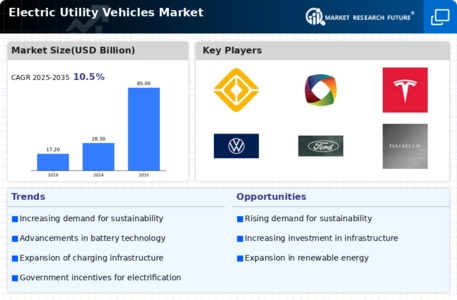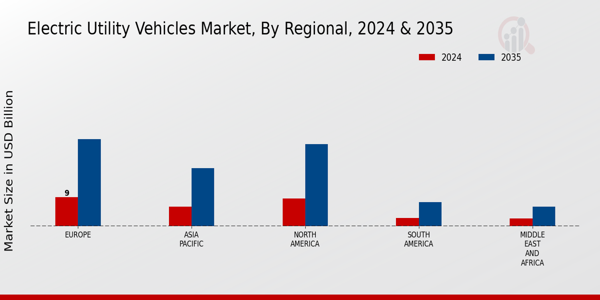The Electric Utility Vehicles Market has been experiencing significant growth, driven by a surge in environmental consciousness, government support for electric vehicle development, and advancements in battery technology.
As major automakers pivot towards sustainable practices, competition within this market has intensified, resulting in the entry of numerous players aiming to capitalize on the emerging demand for electric utility vehicles.
This competitive landscape is characterized by innovation, strategic partnerships, and an ongoing emphasis on the development of robust charging infrastructure.
Moreover, consumer preferences are shifting towards more sustainable options, motivating companies to enhance their offerings and invest in research and development initiatives aimed at improving vehicle performance, range, and user experience.
Each participant is focusing on harnessing cutting-edge technology and leveraging regional market trends to better position themselves against their competitors.
Rivian has emerged as a significant player in the Electric Utility Vehicles Market, known for its focus on electric adventure vehicles designed to appeal to outdoor enthusiasts.
The company's key products include all-electric trucks and SUVs that combine rugged capabilities with advanced technology, providing a unique offering in the market.
Rivian's strengths are highlighted by its innovative approach to vehicle design, strong brand identity, and initial public offerings which have attracted substantial investment.
The company has also forged strategic partnerships with established industry players, enhancing its market presence. Rivian's commitment to sustainability is evident in its efforts to create a comprehensive ecosystem, including their own charging network.
Furthermore, the company has engaged in mergers and acquisitions to bolster its technological advancements, positioning itself effectively within the competitive landscape of electric utility vehicles.
Throughout its global operations, Rivian demonstrates a focused strategy aimed at addressing the diverse needs of consumers while promoting a greener future.


















